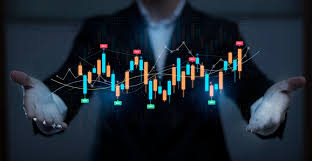
The Ultimate Guide to Forex Currency Trading
Forex currency trading, or foreign exchange trading, is the act of buying and selling currencies in the foreign exchange market. This market is known for its liquidity, massive trading volume, and the diverse opportunities it presents for traders. Whether you’re a beginner exploring the world of forex trading or an experienced trader looking to refine your strategies, this article will provide valuable insights. In South Africa, many traders rely on reputable forex currency trading Forex Brokers in South Africa to navigate this complex landscape.
Understanding Forex Trading
Forex trading involves the simultaneous buying of one currency and selling of another. Currencies are traded in pairs, for instance, the Euro against the US Dollar (EUR/USD) or the British Pound against the Japanese Yen (GBP/JPY). The forex market operates 24 hours a day, five days a week, allowing traders to engage with the market at any time.
The Major Currency Pairs
Major currency pairs are the most traded in the forex market. They include:
- EUR/USD: Euro / US Dollar
- USD/JPY: US Dollar / Japanese Yen
- GBP/USD: British Pound / US Dollar
- USD/CHF: US Dollar / Swiss Franc
These pairs typically have the highest liquidity, which translates to tighter spreads and lower transaction costs, making them a preferred choice for many traders.
Getting Started with Forex Trading
To embark on your forex trading journey, there are several steps to consider:
- Education: Understanding the fundamentals of the forex market is crucial. Numerous online resources, courses, and forums can help you learn the basics.
- Selecting a Broker: Choose a reputable forex broker that suits your trading needs. Look for essential factors such as regulation, spreads, commissions, trading platforms, and customer service.
- Practice with a Demo Account: Leverage demo accounts offered by brokers to practice trading without risking real money. This is an excellent way to familiarize yourself with the trading platform and test your strategies.
- Develop a Trading Plan: Create a trading plan that outlines your trading goals, risk tolerance, preferred currencies, and strategies.
- Start Trading: Once you feel confident, start trading with a small amount of capital. Gradually increase your exposure as you become more experienced.
Essential Trading Strategies
Successful forex trading relies on well-defined strategies. Here are some of the most popular strategies:
1. Day Trading
Day trading involves opening and closing positions within the same trading day. Traders capitalize on small price movements and often use technical analysis to make quick decisions.
2. Swing Trading
Swing traders hold positions for several days or weeks, seeking to capture larger price movements. This strategy requires a blend of technical and fundamental analysis to predict price swings.
3. Scalping
Scalping is a high-frequency trading strategy where traders make numerous trades in a short period, aiming to profit from small price changes. Success in scalping requires speed, precision, and a solid understanding of market conditions.
The Importance of Risk Management
Risk management is a cornerstone of successful forex trading. As a trader, you need to understand how to manage your capital effectively. Here are some essential risk management techniques:
1. Set Stop-Loss Orders
Always use stop-loss orders to limit potential losses on each trade. Determine the maximum amount you are willing to lose and set your stop-loss accordingly.
2. Use Proper Position Sizing
Position sizing refers to the amount of capital you allocate to a particular trade. Use a consistent method to calculate the size of your trades, adjusting to your account balance and risk tolerance.
3. Diversification
Avoid putting all your capital into one trade or currency pair. Diversifying your trades can help mitigate risks.
Technological Advancements in Forex Trading
The forex market has evolved significantly with technology. There are several tools and platforms available to assist traders:
1. Trading Platforms
Most brokers offer trading platforms like MetaTrader 4 (MT4) or MetaTrader 5 (MT5), which provide powerful tools for charting, analysis, and execution of trades.
2. Automated Trading Systems
Some traders utilize automated trading systems or Expert Advisors (EAs) that execute trades based on predetermined criteria. However, it is essential to monitor the performance of these systems regularly.
3. Mobile Trading Apps
With the rise of mobile technology, many brokers offer mobile trading apps, allowing traders to manage their accounts and execute trades on the go.
The Role of Fundamental Analysis
While technical analysis focuses on price movements, fundamental analysis examines economic indicators, interest rates, and geopolitical events that can influence currency values. Understanding economic news releases and their potential impact on the forex market is crucial for making informed trading decisions.
Key Economic Indicators
Keep an eye on crucial economic indicators such as:
- Gross Domestic Product (GDP)
- Non-Farm Payroll (NFP)
- Inflation rates
- Interest rates
- Trade balance
Conclusion
Forex currency trading presents a wealth of opportunities for those willing to put in the time and effort to understand the market. By educating yourself, developing a robust trading plan, employing effective risk management strategies, and continuously honing your skills, you can navigate the forex market more successfully. Remember, the key to success is not just making profits but also managing your risks wisely while learning from both your triumphs and mistakes. Begin your journey with diligence and patience, and the rewards can be significant.
